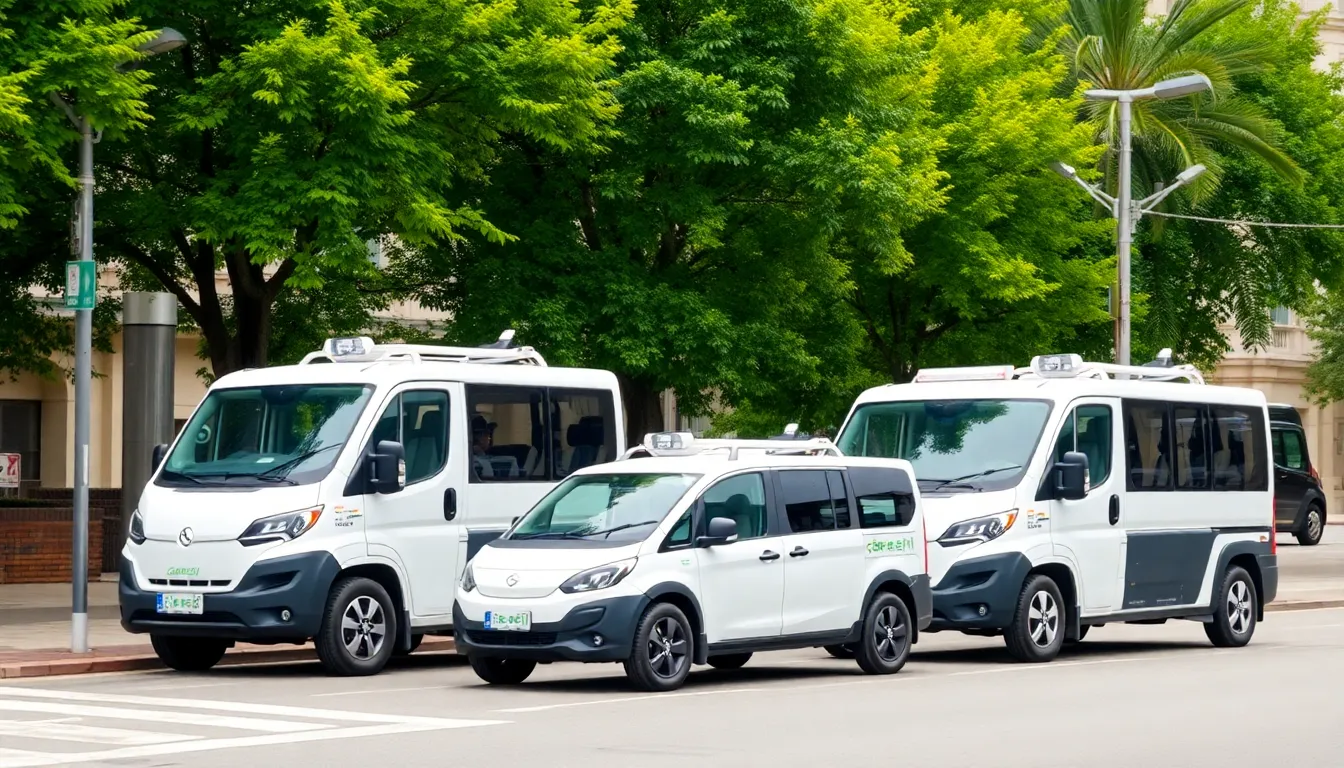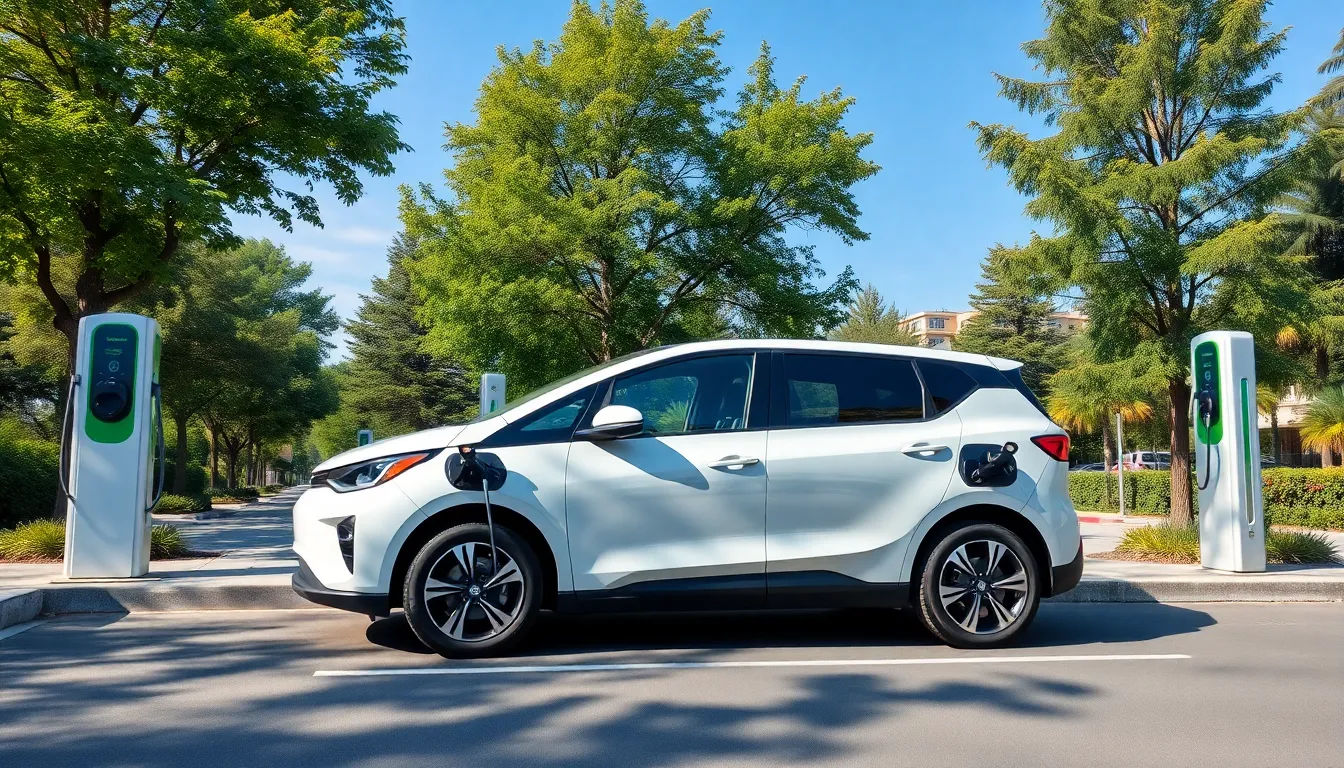Electric utility vehicles are changing the game, and it’s about time! Imagine a world where your workhorse doesn’t just haul heavy loads but does it while whispering sweet nothings to Mother Nature. These eco-friendly marvels are not only reducing emissions but also saving on fuel costs. Who wouldn’t want to trade in gas guzzlers for a smooth ride that’s as quiet as a ninja in a library?
Table of Contents
ToggleOverview of Electric Utility Vehicles
Electric utility vehicles (EUVs) serve critical roles in various industries, from public transport to maintenance services. These vehicles often feature advanced electric drivetrains that enhance efficiency and reduce operating costs. Innovations in battery technology further improve their performance, making them viable for long-term use. Many municipalities find that EUVs contribute to sustainability goals by lowering greenhouse gas emissions.
Fleet operators increasingly adopt EUVs due to lower maintenance costs compared to traditional internal combustion engine vehicles. The simplicity of electric motors leads to fewer moving parts, translating into reduced wear and tear. Organizations can monitor real-time data to optimize routes and manage energy consumption, further increasing cost-effectiveness.
Several manufacturers now produce electric utility vehicles designed to handle diverse tasks. For example, electrified pickups and vans support various applications, including package delivery and utility maintenance. Beyond conventional uses, some models integrate cutting-edge technologies like regenerative braking and connected infrastructure compatibility.
Market trends show robust growth in the EUV sector, fueled by expanding charging networks and supportive government policies. Regulatory incentives encourage companies to invest in electric fleets, and projected sales of electric utility vehicles are expected to reach millions by 2030. This shift not only curtails reliance on fossil fuels but also aligns with broader trends toward electrification in transportation.
Electric utility vehicles represent a significant advancement in eco-friendly transport solutions, bridging the gap between operational efficiency and environmental responsibility. Their adoption signals a transition toward more sustainable practices in industrial and urban settings.
Benefits of Electric Utility Vehicles


Electric utility vehicles offer significant advantages across various sectors. These vehicles promote sustainability and provide cost efficiencies, boosting their appeal.
Environmental Impact
Electric utility vehicles contribute to environmental sustainability. They produce zero tailpipe emissions, reducing urban air pollution significantly. The transition from fossil fuels to electric power helps lower greenhouse gas emissions, contributing to climate change mitigation. Advanced battery technologies, which improve energy density and lower resource consumption, make EUVs more efficient over time. A larger adoption of these vehicles helps in preserving natural resources and encourages cleaner energy consumption patterns. Fleets embracing EUVs actively support initiatives aimed at achieving stricter environmental regulations and sustainability targets.
Cost Savings
Cost savings represent a major benefit of electric utility vehicles. Fleet operators experience lower maintenance expenses due to fewer moving parts in electric drivetrains. Charging costs often decrease significantly, with electricity prices often being lower than fuel prices. Organizations can further enhance savings through real-time data monitoring, optimizing routes, and reducing energy consumption. Incentives from governments promote electric vehicle adoption by offering rebates for fleet upgrade costs. Overall, the combination of reduced operational costs and government support propels electric utility vehicles as financially savvy choices for fleet management.
Key Features of Electric Utility Vehicles
Electric utility vehicles (EUVs) incorporate groundbreaking technologies that enhance performance and sustainability. These features make them essential for modern fleet management.
Battery Technology
Battery technology plays a crucial role in the performance of EUVs. Advanced lithium-ion batteries provide higher energy density and longer ranges than traditional options. Manufacturers focus on increasing battery lifespan, allowing for longer operational periods without replacement. Innovations like solid-state batteries are emerging, promising even greater efficiency and safety. Cost reductions in battery production further drive down overall vehicle expenses, making EUVs more accessible for fleet operators aiming to optimize their budgets.
Charging Infrastructure
Charging infrastructure directly impacts the usability of electric utility vehicles. An expanding network of charging stations ensures convenient access for fleet vehicles in urban areas. Fast-charging solutions reduce downtime, providing quicker turnaround for essential operations. Companies can benefit from partnerships with charging providers, potentially lowering energy costs through strategic agreements. Robust infrastructure also supports the rising demand for EUVs, enabling fleets to transition efficiently while minimizing disruptions.
Popular Models in the Market
Numerous electric utility vehicles (EUVs) have gained attention for their efficiency and versatility. Several manufacturers offer models with distinct features tailored for specific applications.
The Ford F-150 Lightning serves as a prime example, combining utility with advanced technology. This electric pickup truck features a range of up to 300 miles and provides impressive towing capabilities, making it ideal for both work and leisure.
Another notable model is the Rivian R1T, recognized for its off-road capabilities. This vehicle showcases a unique design and supports a range of up to 314 miles. Rivian’s focus on adventure utility appeals to both personal and commercial users.
The BMW iX3 also enters the market, designed as an electric utility SUV. Offering a spacious interior and a range of around 285 miles, it caters to families needing both comfort and performance.
Mercedes-Benz eSprinter focuses on commercial utility, featuring a cargo-friendly design and a range of approximately 200 miles. Its robust construction addresses the demands of urban logistics effectively.
Workhorse C-Series represents an electric delivery vehicle specifically made for logistics. With a range of 100 to 150 miles, this model significantly reduces urban emissions and ensures efficient package delivery.
Various EV models like these exemplify the growing shift towards electric utility solutions. They reflect the evolving market and respond directly to the increasing demand for sustainable choices across industries. By investing in diverse applications, manufacturers are promoting the transition to cleaner transportation options, solidifying electric vehicles’ roles in future fleet management.
Electric utility vehicles are paving the way for a more sustainable future in fleet management. Their ability to reduce emissions and lower operational costs makes them an attractive option for various industries. As advancements in battery technology and charging infrastructure continue to develop, EUVs will only become more efficient and accessible.
The growing market demand reflects a significant shift toward electrification, supported by government incentives and a commitment to environmental sustainability. With diverse models available and tailored to specific needs, EUVs are set to play a crucial role in transforming transportation and utility services. As organizations embrace these vehicles, they not only enhance their operational efficiency but also contribute to a cleaner and greener planet.




